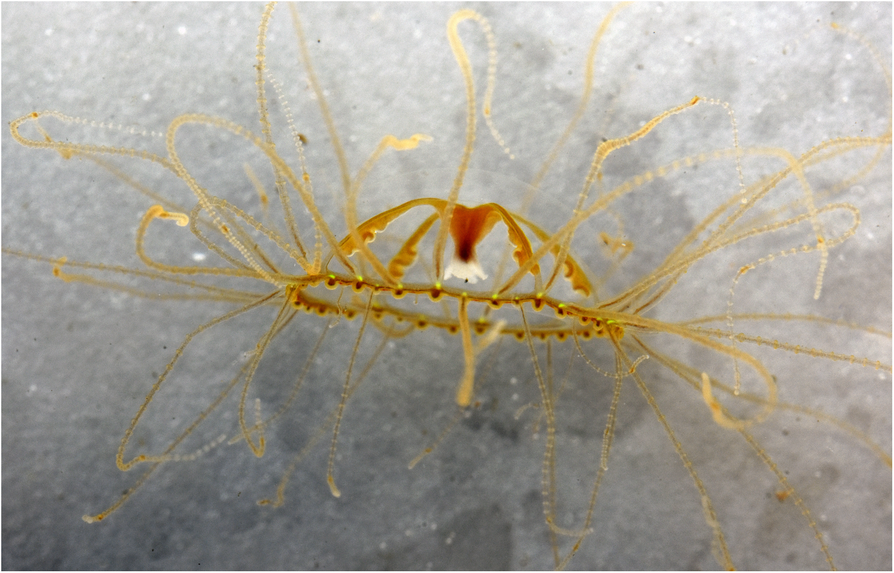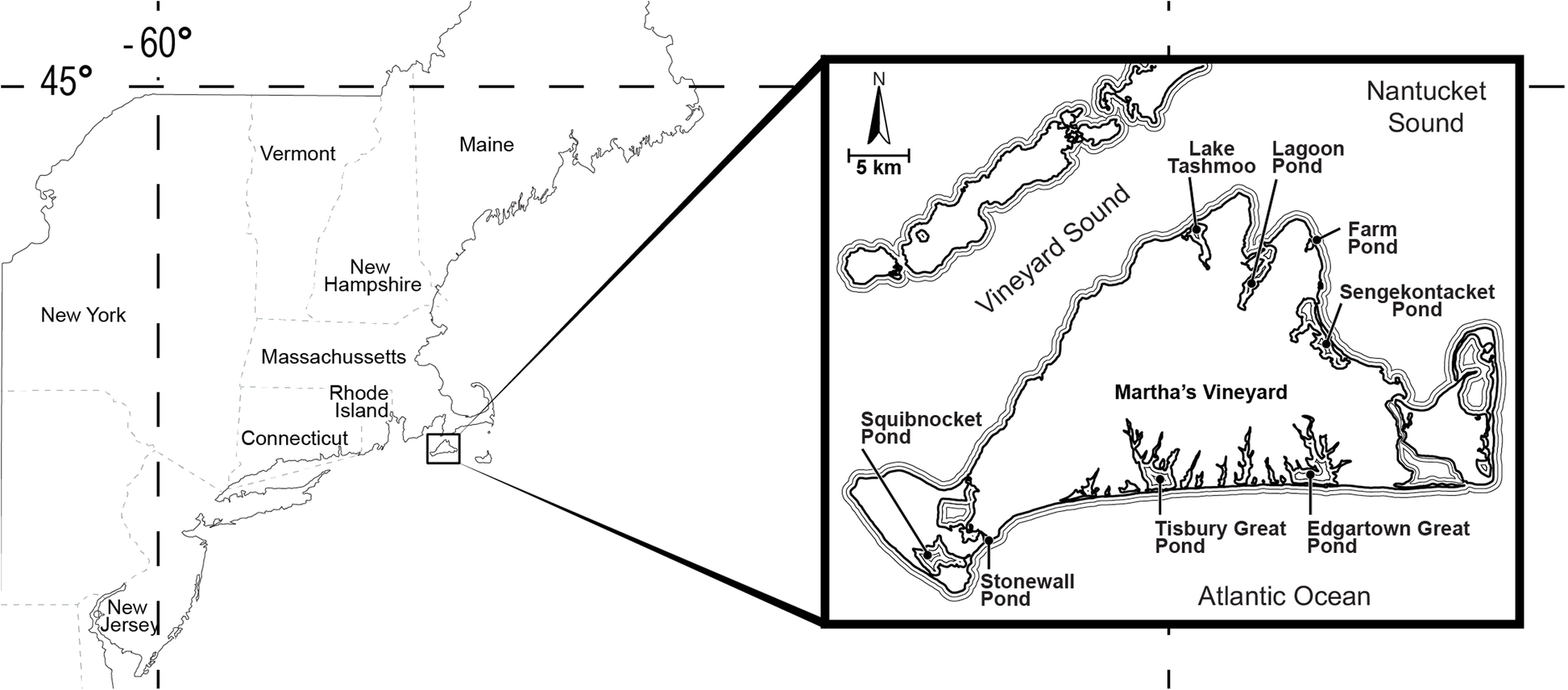
On the fourth of July, 2019, happy beach-goers in Rhode Island escaped the directness of the sun by wading into Point Judith Pond. For an unlucky few, this small pleasure turned out to be immensely painful. By July 5, people were being warned about clinging jellyfish in South Kingstown, the translucent culprits of the intense stings that sent five people to the emergency room in three days. What was this new threat to unsuspecting swimmers? Turns out it’s not so new and not unique to Rhode Island.
Gonionemus spp., the group of clinging jellies that have caused so much concern, have been popping up in new locations around the world, especially the Northwest Atlantic. A new study done by researchers at Woods Hole Oceanographic Institute in collaboration with the Oak Bluffs Shellfish Department and Great Pond Foundation focused on the arrival of these jellies in various ponds on Martha’s Vineyard. What they found was a stronger version of a species that almost disappeared around the 1930s.
What makes clinging jellyfish so interesting? First, the reason they are called clinging jellyfish is because they have sticky ends to their tentacles that are designed to help them cling to eelgrass. This is useful when they are trying to avoid getting swept away, but when that sticky bit finds a human leg, for example, the result is they end up repeatedly stinging the unfortunate bather.
Clinging jellyfish also are not new to New England; they were documented here in the 1890s and 1900s, but when a wasting disease wiped out large portions of the New England eelgrass habitat, the jellyfish all but went with them. This new round of clinging jellyfish, however, is thought to be a more toxic variety, related but not the same. This is something the lead author on the paper, Mary Carman, has experienced first-hand. When she was diving in Farm Pond on Martha’s Vineyard in 2013, she was stung on the face, a feeling she equated to “hypodermic needles.”

Inspired by her experience, she and her colleagues conducted a survey of all the major coastal ponds on Martha’s Vineyard from June to September in 2018. They found clinging jellyfish in five of the eight ponds. When they took a closer look at the jellyfish in each pond, they found that the ponds with the highest number of jellyfish, Stonewall Pond and Farm Pond, also had the smallest jellies, which were sexually immature. They also only found the clinging jellyfish in areas with eelgrass, although other studies have found clinging jellyfish in other environments as well.
Even more interesting, when the researchers looked at the sex of the jellyfish, all of the adult jellies in Edgartown Pond were males. This is possible because of the interesting way that these jellyfish mate, both sexually and by cloning themselves. If both male and female jellyfish are present, they can release gametes (a reproductive cell with half the genetic information needed, like a sperm or egg in humans) into the water, which will in turn find the gametes from other jellyfish, fertilize, and settle to form a polyp which becomes a grown up medusa (the adult form of jellyfish). However, clinging jellyfish can also reproduce asexually, creating a cell with all their genetic material that will grow into a fully formed adult jellyfish. Carman and her team believe that Edgartown was likely invaded recently and has been filled by asexually producing jellies. If a female is ever introduced into the mix, maybe by a boat, the sexual balance would be tipped more equally. As sexual ratios across all the ponds were inconsistent, the researchers concluded that both sexual and asexual reproduction are important in the invasion of these jellyfish.

How did these jellyfish get here? When the researchers looked at the how jellyfish were spread out over Edgartown Pond, they found more jellyfish near the town. This, combined with the fact that all the adults in the pond were male, suggests that the jellyfish were introduced by the hull of a boat, in the form of the polyps or cysts from a cloned jellyfish.
While clinging jellyfish are immensely fascinating from a biological perspective, getting stung is less fun. There are a few things you can do though if you ever find yourself in this situation. You can try to deactivate the stinging cells with white vinegar. You can also try to rinse with salt water, but not fresh since freshwater will actually activate more of the stinging cells. Additionally, do not try to wipe away a jellyfish sting with your hands – this will only spread the stinging cells. If you still see tentacles on you, try to remove them without touching them, with tweezers and gloves. Of course if the sting is bad, go to the doctor.
And one last thing – peeing on a friend will do little to help them with a jellyfish sting, and it may, in fact, make it worse. Unless you are looking for an interesting story, stick to more traditional methods.
Next time you go swimming, be aware. The clinging, cloning jellies have made it to New England, maybe to a salt pond near you.
I am a PhD student studying Biological Oceanography at the University of Rhode Island Graduate School of Oceanography. My interests are in food webs, ecology, and the interaction of humans and the ocean, whether that is in the form of fishing, pollution, climate change, or simply how we view the ocean. I am currently researching the decline of cancer crabs and lobsters in the Narragansett Bay.


